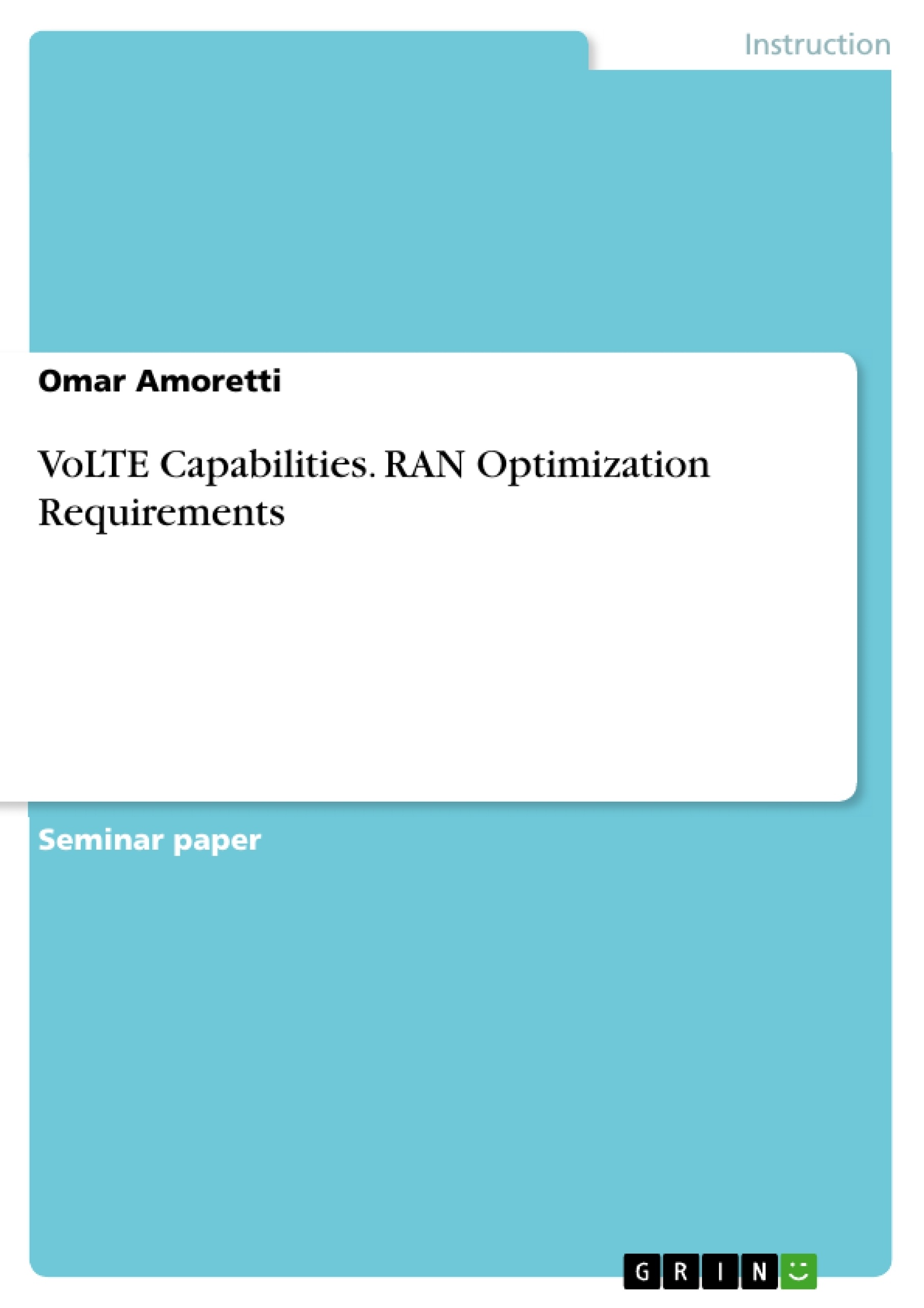The increasing gap among capacity and demand poses an important call for novel network technologies to allow mobile operators to improve performance (from the end-users’ point of view) on a cost-effective basis. In fact, Voice over Long Term Evolution (VoLTE) is a key component for an innovative set of base services defined for all-IP networks: the objective relies on making such new services as accessible as voice and SMS are nowadays, while also offering a flexible interaction with Internet applications.
Indeed, LTE focus on a (rather flat) all-IP access technology aiming at delivering a bandwidth-efficient method of carrying multiple types of user traffic at the same time. In other words, the capability of deploying Voice over IP (VoIP) services, while also supporting high-rate data throughputs, characterizes one of the critical drivers for the development to LTE.
Within this context, the IP Multimedia Subsystem (IMS) and Session Initiation Protocol (SIP) are essential technologies for deploying VoIP in an LTE setting. Nevertheless, the LTE RAN features are ultimately responsible for creating ‘value added’ services in relation to VoIP. Therefore, this paper illustrates in the second chapter the advantages of the IMS-based VoLTE approach as well as its (strategic) positioning compared to initial methods and over-the-top (OTT) providers.
Furthermore, the third chapter explains that optimization of radio features and parameters is required to offer reliable VoLTE connections based on high success rates. This is especially important for highly-competitive markets like the Austrian telecommunication sector: annual network performance tests (conducted by the P3 Group for example) may unmask a mobile operator’s (network) vulnerabilities and critically influence its customer’s preference and the likely churn rate. Finally, conclusions are drawn based on the key findings described in this paper.
Inhaltsverzeichnis (Table of Contents)
- Introduction
- Migrating to IMS-based VoLTE: Initial considerations.
- Benefits of IMS-based VoLTE..
- Positioning VoLTE
- VOLTE Parameter Optimization
- Robust Header Compression (RoHC).
- Transmission Time Interval (TTI) Bundling
- Discontinuous Reception (DRX)
- Dedicated Bearers
- Semi-Persistent Scheduling (SPS) ......
- Conclusion.
Zielsetzung und Themenschwerpunkte (Objectives and Key Themes)
This paper discusses the advantages and requirements of Voice over Long Term Evolution (VoLTE), specifically focusing on optimizing its performance within an IMS environment. It aims to provide a comprehensive overview of the technical aspects of VoLTE, highlighting its benefits and challenges, and exploring how various radio features and parameters contribute to a high-quality user experience.
- Advantages of IMS-based VoLTE over traditional CS voice and OTT solutions
- Optimization of radio features and parameters for reliable VoLTE connections
- The role of the LTE Radio Access Network (RAN) in delivering a carrier-grade VoLTE experience
- Importance of ensuring high success rates for VoLTE in a competitive market
- The evolution of communication services towards all-IP networks
Zusammenfassung der Kapitel (Chapter Summaries)
- Introduction: The paper introduces the concept of VoLTE as a key enabler for all-IP networks, emphasizing its ability to deliver high-quality voice and data services simultaneously. It highlights the importance of IMS and SIP for VoIP deployment and the role of LTE RAN features in enhancing user experience.
- Migrating to IMS-based VoLTE: Initial considerations: This chapter delves into the benefits of using IMS-based VoLTE, comparing it to traditional CS voice and OTT solutions. It discusses the limitations of OTT solutions, such as the lack of QoS guarantees and emergency support.
- VOLTE Parameter Optimization: This chapter focuses on the optimization of radio features and parameters to ensure reliable VoLTE connections. It explores various techniques like Robust Header Compression (RoHC), Transmission Time Interval (TTI) Bundling, Discontinuous Reception (DRX), Dedicated Bearers, and Semi-Persistent Scheduling (SPS).
Schlüsselwörter (Keywords)
This paper focuses on the following key concepts and terms: VoLTE, IMS, SIP, LTE, RAN, QoS, OTT, VoIP, data throughput, user experience, network optimization, carrier-grade, and radio features.
- Citation du texte
- Omar Amoretti (Auteur), 2015, VoLTE Capabilities. RAN Optimization Requirements, Munich, GRIN Verlag, https://www.grin.com/document/300821




